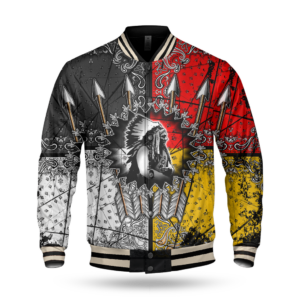Flower moon which means native american

The Flower Moon holds deep significance in Native American culture, representing a rich tapestry of traditions and beliefs. Its meaning is intertwined with the natural world and the cycles of life, providing a glimpse into the religious connection between people and nature. Join us as we explore the fascinating symbolism and cultural significance behind the Flower Moon in Native American traditions.
Flower moon meaning native american
The Old Farmer's Almanac, which initiated the tradition of naming full moons within the Nineteen Thirties, documented that certain Native American tribes identified the full Moon in May because the "Flower Moon." This title was attributed to the widespread blossoming of flowers throughout North America, symbolizing abundance following a harsh and cold winter, as outlined by NASA.
Similarly, varied tribes named the moon in accordance with the arrival of spring, drawing inspiration from the changing seasons. For occasion, a quantity of northern Native American tribes denoted the May full moon because the "Budding Moon" or "Leaf Budding Moon" to rejoice the emergence of new spring foliage. It was also referred to as the "Planting Moon," signifying the time to sow seeds in preparation for the upcoming farming season.
What does the moon symbolize for Native Americans?

The moon holds a big place within the mythology of all Northwest Coast nations, serving as a information, protector, guardian spirit, timekeeper, and image of transformation.
Among the Nuu-chah-nulth, the moon, and its companion, the solar, are revered as essentially the most highly effective beings, believed to convey good luck and bountiful harvests. Interestingly, the moon is personified as a male entity on this tradition, a rarity in comparability with different Indigenous groups where the moon is commonly depicted as a more delicate and serene feminine figure alongside the sun.
The moon frequently shares a reference to the Wolf due to their nocturnal nature. Sometimes, it is depicted held in the beak of the Raven, a reference to the creation story during which Raven launched the solar, moon, and stars into the sky.
In one other legend, a giant supernatural codfish swallows the moon during a lunar eclipse. To counter this, the Kwakwaka’wakw and Nuu-chah-nulth individuals would kindle a big bonfire and add pine tree branches to create smoke, prompting the codfish to cough up the swallowed moon.
The moon performs a significant role within the Peace Dance of the Kwakwaka’wakw and the Winter Ceremonies of the Huxalk. Among the Haida, it is an unique crest reserved for only some of the highest-ranking chiefs.
Typically, depictions of the moon characteristic a rounded face with comparatively flat features. The moon's countenance is commonly human or avian, occasionally taking up a crescent form, and typically adorned with a labret, symbolizing a female side.
What does the complete moon mean in Native American culture?
Indigenous cultures have always held a profound reverence for the pure world and the celestial realms. The Moon's rhythmic journey by way of its cycles was not merely a timekeeping mechanism but a profound synchrony of cosmic and earthly rhythms. By attuning themselves to the Moon, Indigenous peoples found their place throughout the grand tapestry of existence.
"The Moon cycle is an integral part of our tradition and identity," explains Sara Thompson, a writer and yoga instructor who inherited this lunar knowledge from her grandmother, a member of the Ojibwe tribe, the biggest Indigenous neighborhood in North America.
Each full Moon marks the fruits of a month, generally recognized as "moon time." native american clothing brands throughout North America bestowed names upon each full Moon throughout the year, reflecting significant seasonal actions throughout its lunar reign.
The plethora of Indigenous full Moon names is a testament to the vast variety and intricacies of every tribe's cultural fabric, spanning lots of of distinct communities across North America. While a few of these names could have waned in everyday use, their enduring connection to the natural world serves as a testament to the profound heritage and wisdom embedded in Indigenous cultures.
By embracing and honoring these traditional full Moon names, we deepen our appreciation for the intricate interaction between all dwelling beings and our profound reference to nature and the celestial sphere. In doing so, we build a bridge that spans the knowledge of our ancestors and the realities of contemporary life.
What does the Strawberry Moon mean to Native Americans?

June's upcoming full moon, scheduled for Saturday, is famously known as the "Strawberry Moon," as detailed in a submit by the Old Farmers Almanac. However, its title isn't necessarily linked to the moon's reddish hue.
The almanac explains that the moniker "Strawberry Moon" has its origins in numerous sources. While it is true that moons can appear reddish close to the horizon, the June moon's identify primarily pays homage to the delectable berries themselves.
The post notes, "Native American Algonquian tribes residing in the northeastern United States, along with the Ojibwe, Dakota, and Lakota peoples, have used the title 'Strawberry Moon' to mark the ripening of 'June-bearing' strawberries, signaling that they're prepared for harvest."
"As flowers blossom and early fruits ripen, June turns into a season of bountiful abundance for many," the post additional elaborates.
In a blog submit by NASA, it's defined that the time period "Strawberry Moon" is derived from the "comparatively transient period when strawberries could be harvested within the northeastern United States."
